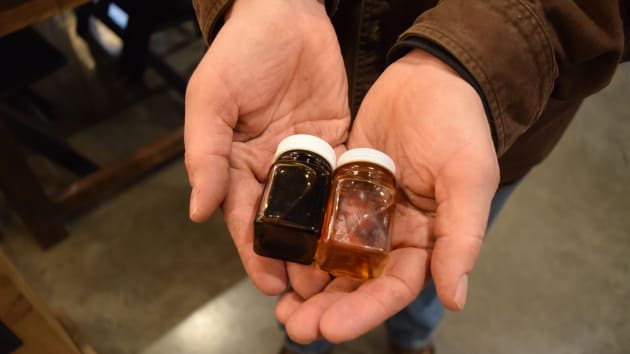
ORANGE COUNTY, NY — Dana Putnam drilled into a maple tree, added a plastic tube and waited for the sap to flow.
Nothing happened.
After weeks of experiencing hotter temperatures, Putnam is anxious his season will end early. And he’s only collected half of the crop yield he says he should already have at this point.
“If we don’t harvest enough syrup, we’ll have to buy it. That changes our cost structure entirely,” Putnam said. “I think about climate change and whether or not this maple business will be viable in a decade — it might not be.”
Maple trees won’t produce sap unless they undergo freezing and thawing cycles. But in New York this winter, there’s been no snow or frost on the ground as climate change accelerates. The hotter temperatures have made it harder for farmers to pull sap from the trees and threaten to end the production season early.
New York’s maple industry, the second largest in the country behind Vermont, is actually thriving, with production numbers hitting a 75-year record of 820,000 gallons of syrup in 2019. It’s also seen substantial growth, with a 50% increase in production over the past five years, according to the USDA’s National Agricultural Statistics Service.
However, climate change forecasts indicate the trend won’t last — especially for smaller scale farms in New York, who are more vulnerable to rising temperatures and extreme weather than larger producers in states like Vermont. Putnam said his tapping seasons in 2017 and 2018 ended early, resulting in a 30% loss in crop yield each year. He expects this year will be similar.
“We’re a small business. For us, the most significant thing is that we always buy some syrup, because sales are always more than production,” he said. “But our margin is about 40% better when we can make it ourselves.” Putnam’s margin is generally 36% when he needs to purchase more syrup.